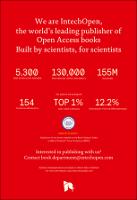Chapter Quality Management in Spice Paprika Production: From Cultivation to End Product
Author(s)
Klátyik, Szandra
Bata-Vidács, Ildikó
Molnár, Helga
Székács, András
Pék, Miklós
Language
EnglishAbstract
There is ample historical and scientifically proven information regarding the health benefits of spice paprika, including favourable physiological effects, anti-oxidant and anti-inflammatory properties. Nonetheless, even though it is consumed in small portions, spice paprika has occasionally been reported for chemical/microbiological contamination, as well as fraud or food adulteration. Quality management can guarantee effective reduction of such contamination cases. Different production stages within cultivation and production are subject to different contamination types. Cultivation is a common source of pesticide residues, and unfavourable harvest conditions may give rise to mycotoxins by pathogenic fungi. Storage and post-ripening prior to processing is attributed with microbial contamination and possible increase in mycotoxin content may significantly affect quality features. Technology steps, for example, washing, separation, drying may worsen microbial contamination or quality, but normally do not lead to increase in mycotoxins; nonetheless, decontamination technology is a prerequisite for microbial safety of the product. Upon effective decontamination, finishing steps in the processing technology, for example, grinding, packaging and end product handling do not affect the microbial status, but other, occasionally deliberate contamination due to mixing and adulteration may occur at this stage.
Keywords
Capsicum, agro-environmental and food safety, contaminants, technology, critical control pointsDOI
10.5772/intechopen.71227Publisher
InTechOpenPublisher website
https://www.intechopen.com/Publication date and place
2018Classification
Production and quality control management


 Download
Download